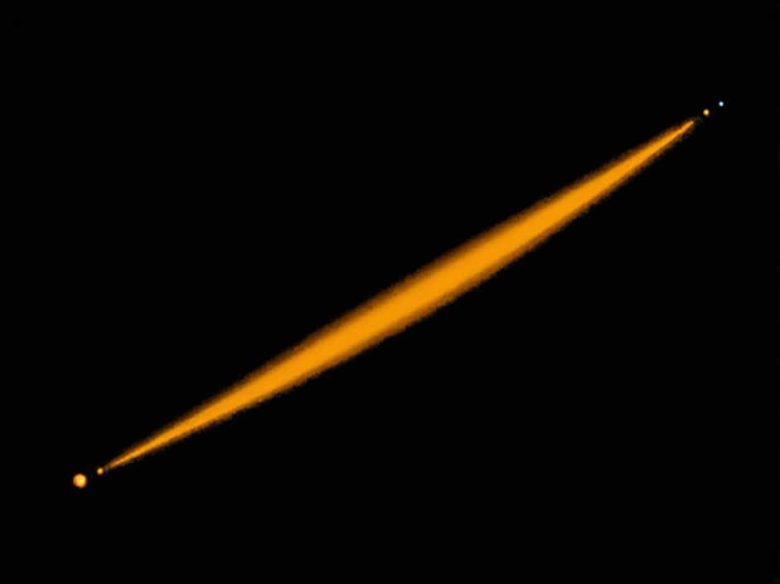The Hertzsprung-Russell (H-R) Diagram is one of the most essential tools in stellar astrophysics. It serves as a graphical representation of stars, plotting their luminosity against their temperature or spectral class. A critical feature of this diagram is the main sequence, a band where the majority of stars, including our Sun, are found. Understanding the main sequence is key to understanding the life cycles of stars and their behavior in the universe. In this topic, we will explore what the main sequence is, how it relates to other phases in a star’s life, and why it is such a crucial part of stellar astronomy.
What Is the Main Sequence?
The main sequence on the H-R diagram is a continuous and distinct band of stars that runs from the top left to the bottom right of the diagram. Stars on the main sequence are in a stable phase of their lives, where they primarily generate energy through nuclear fusion in their cores. During this phase, stars burn hydrogen into helium, releasing energy that counteracts the force of gravity pulling the star inward.
Key Characteristics of Main Sequence Stars
Stars on the main sequence are characterized by the following:
- Stable Hydrogen Fusion: Main sequence stars fuse hydrogen into helium in their cores, which produces the energy they radiate as light and heat.
- Varied Sizes and Temperatures: While all stars on the main sequence undergo hydrogen fusion, they vary in mass, temperature, and luminosity. The mass of a star largely determines its position on the main sequence.
- Lifespan: The amount of time a star spends on the main sequence depends on its mass. More massive stars burn through their hydrogen fuel faster, so they spend a shorter time on the main sequence than smaller stars.
The H-R Diagram: How Does the Main Sequence Fit In?
The H-R diagram is a scatter plot with luminosity (brightness) on the vertical axis and temperature (or spectral class) on the horizontal axis. The diagram is divided into several key regions:
- Main Sequence: The majority of stars fall along the diagonal band from the upper-left (hot, bright stars) to the lower-right (cooler, dimmer stars).
- Red Giants: Stars that have exhausted their hydrogen fuel and expanded become red giants, located above the main sequence.
- White Dwarfs: These are remnants of low-mass stars that have shed their outer layers, positioned in the lower-left corner of the diagram.
The main sequence represents the “middle age” of a star’s life, where it spends the majority of its time before progressing to later stages of its evolution.
How Are Stars Placed on the Main Sequence?
Stars on the main sequence are classified according to their mass, which determines where they fall on the H-R diagram. This classification is divided into spectral types, ranging from O-type stars (the hottest and most massive) to M-type stars (the coolest and least massive). Here’s a closer look at the spectral types and their positions on the main sequence:
Spectral Types and Star Classification
- O-type stars: These are the hottest stars, with temperatures above 30,000 Kelvin. They are also the most massive, often exceeding 10 times the mass of the Sun. These stars emit a blue or blue-white light and are located in the upper-left part of the H-R diagram.
- B-type stars: These stars are still hot, with temperatures between 10,000 and 30,000 Kelvin. They are slightly less massive than O-type stars and emit a blue light.
- A-type stars: These stars have temperatures between 7,500 and 10,000 Kelvin and emit white light. They are slightly less massive than B-type stars and are found in the middle of the main sequence.
- F-type stars: With temperatures between 6,000 and 7,500 Kelvin, these stars emit a yellow-white light. They are cooler and smaller than A-type stars.
- G-type stars: These stars, like our Sun, have temperatures between 5,300 and 6,000 Kelvin and emit a yellow light. They are classified as medium-sized stars.
- K-type stars: These stars are cooler than G-type stars, with temperatures between 3,500 and 5,300 Kelvin. They emit an orange light and are smaller than G-type stars.
- M-type stars: The coolest stars, with temperatures below 3,500 Kelvin, emit a red light. These stars are typically the most abundant in the universe.
The Sun, as a G-type star, is located in the middle of the main sequence.
Main Sequence Stars and Their Lifespan
Stars spend the majority of their lives on the main sequence, with their lifespan determined primarily by their mass. More massive stars burn through their hydrogen fuel more quickly, meaning they will have shorter lifespans. For example:
- High-mass stars (10 times the mass of the Sun or more) may only remain on the main sequence for 10 million years before exhausting their hydrogen supply and evolving into red giants.
- Low-mass stars (like red dwarfs) can remain on the main sequence for tens to hundreds of billions of years, as they burn their hydrogen much more slowly than their more massive counterparts.
This difference in lifespan is due to the rate at which stars with varying masses fuse hydrogen into helium. While massive stars burn their fuel much faster, smaller stars, like red dwarfs, burn their fuel at a much slower rate and therefore live significantly longer.
The End of the Main Sequence: What Happens Next?
Once a star exhausts the hydrogen in its core, it can no longer maintain the fusion process that keeps it stable. This leads to a dramatic change in the star’s evolution. The star will leave the main sequence and begin to expand, becoming a red giant or supergiant (depending on its mass). In this phase, the star starts fusing helium and other heavier elements, eventually leading to the formation of various stellar remnants such as white dwarfs, neutron stars, or black holes.
- Low-mass stars: These stars will shed their outer layers, creating planetary nebulae, and leave behind a dense core that becomes a white dwarf.
- High-mass stars: These stars undergo a more violent end, exploding as supernovae, and may form neutron stars or black holes, depending on their mass.
The main sequence is an essential concept in the study of stars and their life cycles. It represents the stable phase of a star’s existence, where hydrogen fusion occurs in the core, producing the energy that powers the star. The position of a star on the main sequence depends on its mass, which influences its temperature, luminosity, and lifespan. Understanding the main sequence helps astronomers predict the future evolution of stars and provides valuable insight into the dynamics of stellar systems.
From the blue giants at the top left of the H-R diagram to the red dwarfs in the lower right, the main sequence encompasses the vast majority of stars, including our Sun. It is a fundamental aspect of how stars are born, live, and eventually die, making it a crucial element in the study of stellar astrophysics.



